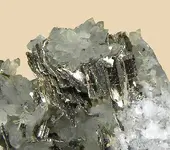O
Old Silver
Guest
What really seals the bogus nature of the pamphlet is that gold in that quantity along with silver in
that quantity aren't found together in nature. All OS has to do is visit the Denver museum of
Colorado mining and ask the curator if massive native gold and silver deposits have ever been
discovered in situ in a single mine in Colorado or any other place in North America.
I know OS wouldn't believe him either because he desperately wants to swallow the legend
whole. We've all been there in our formative years but eventually we learn to strain out
the gnats.
You haven't done the research on this, or you would know how wrong your statements are. I have done the research, and I know that those quantities of gold and silver ore are possible, and even greater quantities. All you have done here is show that you haven't found the information I have found. I'm not in my formative years of treasure research. If I were, I'd be making posts like yours, trying to talk about things I know nothing about. Just do the research, and look at the documented research that others have done, and see that you really don't have an argument.
Amazon Forum Fav 👍
Last edited:



 Thirty men of means and a county hot spot was the best hiding place they could muster?
Thirty men of means and a county hot spot was the best hiding place they could muster? 

